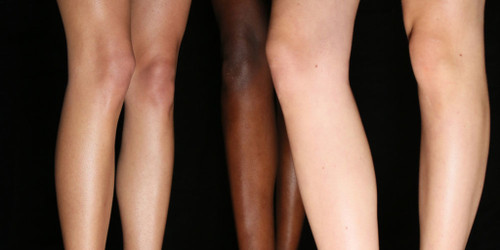How to Prevent Thigh Chafing: Tips for Smooth, Pain-Free Skin
Posted by Jack Miller on 1st Sep 2024
Thigh chafing is a common issue that affects many people, regardless of body type or fitness level. It happens when the inner thighs rub against each other, causing irritation, redness, and even painful blisters. Fortunately, there are several effective ways to prevent thigh chafing and keep your skin smooth and pain-free. In this blog, we'll explore practical tips and strategies to help you avoid this discomfort.
1. Choose the Right Clothing
One of the simplest ways to prevent thigh chafing is to wear the right clothing. Opt for moisture-wicking fabrics that help keep your skin dry by pulling sweat away from your body. Synthetic fabrics like polyester, nylon, and spandex are excellent choices. Avoid cotton, as it tends to retain moisture, increasing the risk of friction and irritation. Additionally, wearing fitted clothing such as compression shorts or athletic leggings can help reduce friction between your thighs by providing a barrier.
Tip: Look for seamless options to minimize areas that might cause additional friction.
2. Use Anti-Chafing Products
There are many products on the market specifically designed as chafing remedies. These include anti-chafing balms, creams, powders, and sticks. Products like Body Glide, Vaseline, and cornstarch-based powders create a protective layer on the skin, reducing friction and irritation. When applying these products, make sure to cover all areas prone to chafing generously.
Tip: Apply anti-chafing products before you get dressed to ensure even coverage.
3. Stay Dry
Moisture is a significant factor in causing chafing. Keeping your skin dry, especially during exercise or on hot days, is crucial. Consider using moisture-wicking underwear or shorts that help keep sweat at bay. Additionally, carrying a small towel or cloth can help you pat down any moisture buildup throughout the day.
Tip: For extra protection, use an antiperspirant on your inner thighs to reduce sweating.
4. Maintain a Healthy Weight
While chafing can happen to anyone, maintaining a healthy weight can help reduce the likelihood of your thighs rubbing together. Regular exercise and a balanced diet can help you achieve and maintain a weight that reduces thigh friction.
Tip: Incorporating strength training into your exercise routine can help tone your inner thighs, potentially reducing chafing.
5. Stay Hydrated
Staying hydrated is not only good for overall health but also helps regulate body temperature and reduce excessive sweating. Drink plenty of water throughout the day, especially when exercising or during hot weather. Adequate hydration helps keep your skin in better condition and less prone to irritation.
Tip: Avoid caffeinated and sugary drinks, as they can contribute to dehydration.
6. Consider Anti Chafing Thigh Bands
Anti chafing thigh bands are a great option for people who experience chafing but don't want to wear additional layers like shorts or leggings. These bands are designed to stay in place on your thighs, providing a barrier that prevents skin-to-skin contact. They come in various sizes and materials, allowing you to choose the one that best suits your comfort and style.
Tip: Look for thigh bands with silicone grips to prevent them from slipping during movement.
7. Practice Good Hygiene
Keeping your skin clean is essential to prevent chafing. Shower regularly, especially after sweating, to remove salt and bacteria that can irritate your skin. Use a gentle cleanser and avoid harsh soaps that may strip the skin of its natural oils. After showering, ensure your skin is completely dry before dressing.
Tip: Apply a gentle moisturizer after showering to keep your skin hydrated and more resilient to friction.
8. Listen to Your Body
Lastly, it's important to listen to your body. If you start feeling the telltale signs of chafing — like burning or irritation — take immediate action. Reapply an anti-chafing product, change into dry clothing, or take a break from activities that may be causing the friction.
Tip: If you experience persistent or severe chafing, consult a healthcare professional for advice and treatment options.
Thigh chafing can be an uncomfortable and frustrating problem, but it is preventable with the right approach. By choosing appropriate clothing, using anti-chafing products, and maintaining good hygiene, you can protect your skin and enjoy your activities without the discomfort of chafing. Remember to stay proactive and listen to your body's signals, and you'll be well on your way to smooth, pain-free thighs.

